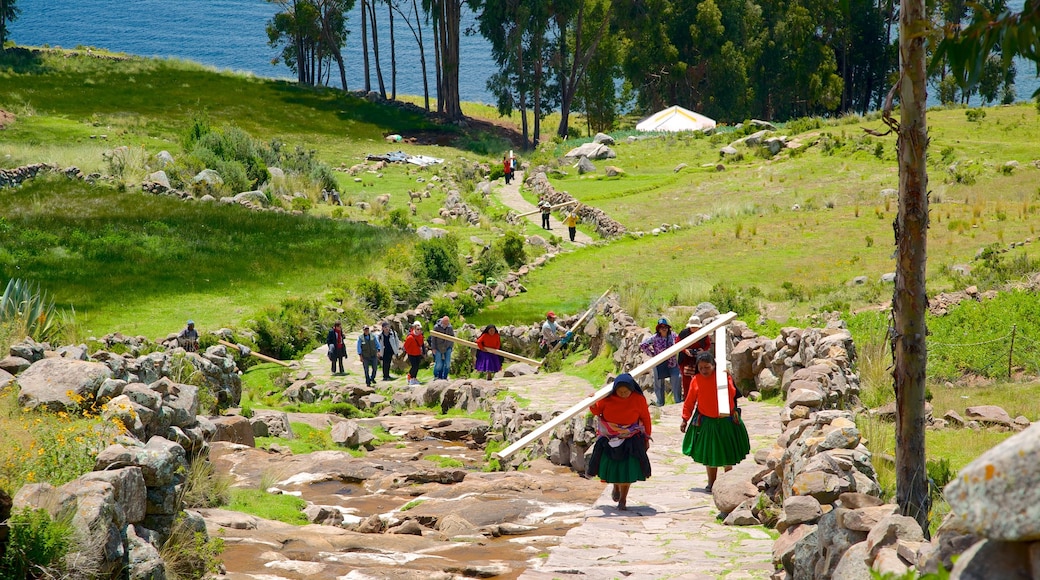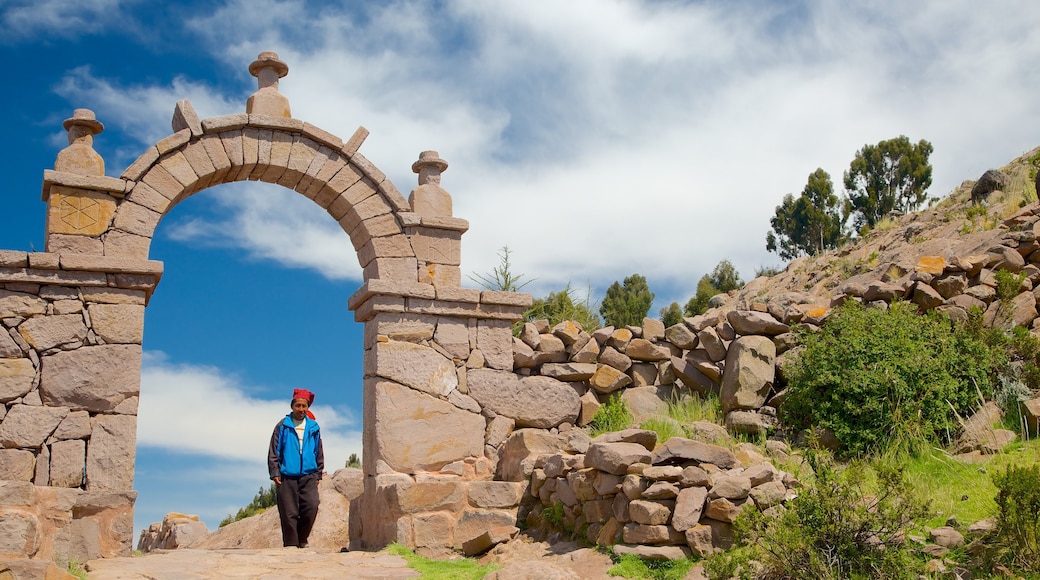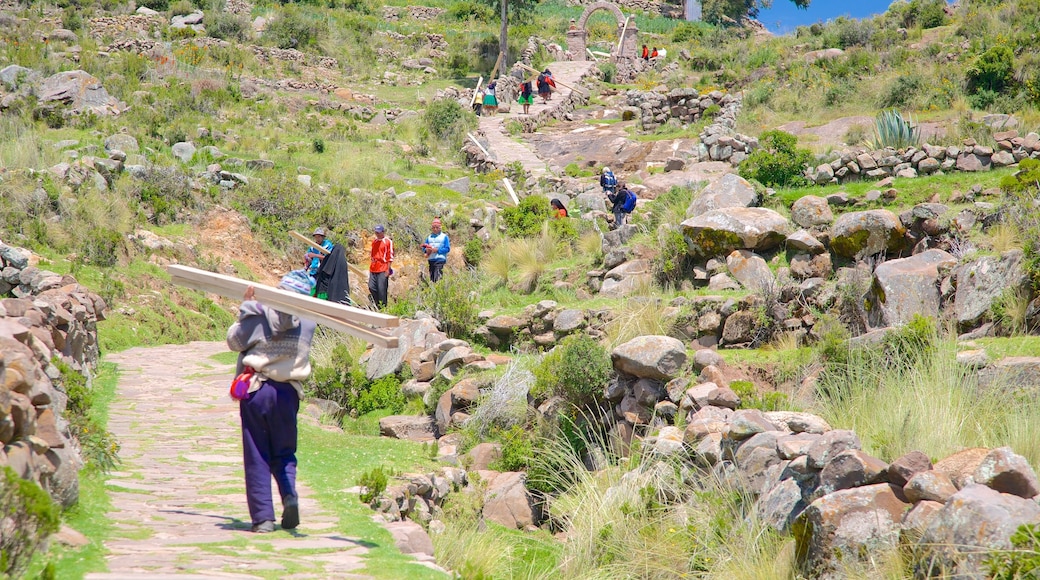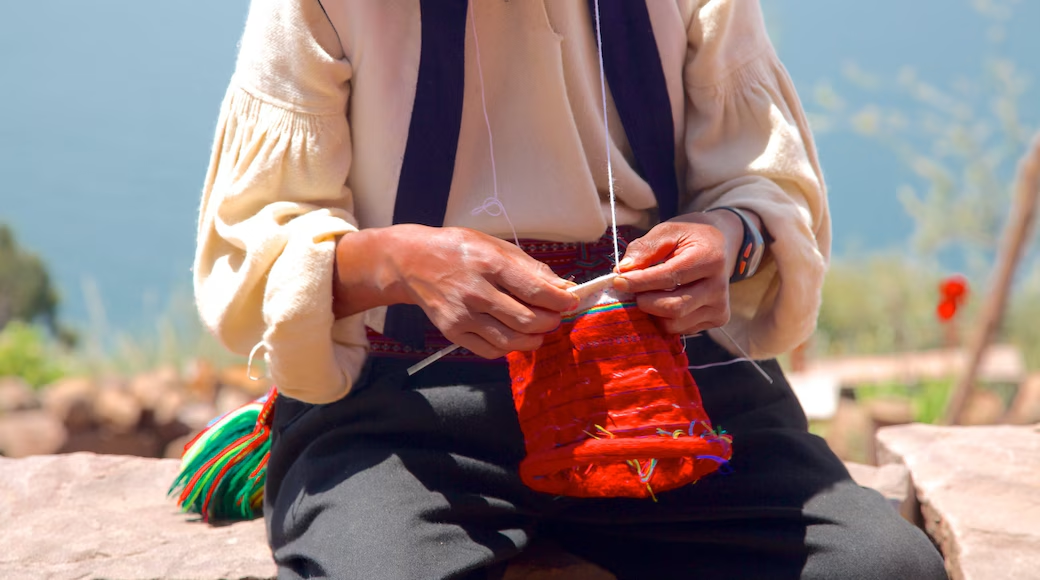Travel across Lake Titicaca to reach this small island where you can see pre-Columbian ruins and handicraft traditions kept alive today through a strong sense of community.
Measuring less than 3 square miles (7 square kilometers), tiny Isla Taquile is one of the top attractions of the vast Lake Titicaca. Admire views of the soaring peaks of the Cordillera Real range at the far end of the lake, mingle with the Quechua-speaking locals and learn about the island’s handicraft heritage, which is included on UNESCO’s list of the Intangible Cultural Heritage of Humanity.
In part because of Taquile’s isolated setting, the local community has a distinct and keenly felt sense of identity. As tourists began to arrive in Lake Titicaca in the 1970s, the local leaders of Isla Taquile assumed control over the island’s tourist trade, forming the community-owned Munay Taquile Travel Agency, which remains the only tourist agency on the island.
Upon arrival on the island, have a local guide show you around and introduce you to local customs. Perhaps most interesting about this island community is their emphasis on community living, which means sharing resources, responsibility and profit. Learn about the strong weaving tradition of the island and the distinctive garments, including the chullo (a pointed hat) and the faja (wide belt), often worn by the locals. Pass under the island’s oft-photographed arch to reach the community-run artisan handicraft store on the main square and browse authentic handwoven textiles.
Follow paths around the island to view the Inca-style terraces and ancient ruins. The island also affords spectacular views of the vast blue expanse that is Lake Titicaca, and on a clear day, a glimpse of the snow-topped Cordillera Real, in the background.
Don’t come to Isla Taquile expecting Western-style restaurants and tourist facilities. Tourists who visit here will instead get a taste for local life, dining on traditional cuisine in simple surrounds and staying in islanders’ own homes.
Boats bound for Isla Taquile depart from the port in Puno and take around 4 hours to reach the little island. Isla Taquile and the Lake Titicaca area are located at a high altitude, so allow yourself ample time to adjust. Not all accommodations have running water and electricity.








